The Byzantine Empire, also referred to as the Eastern Roman Empire or Byzantium, was the continuation of the Roman Empire in its eastern provinces during Late Antiquity and the Middle Ages, that is from 330 to 1453 AD.

Image source:https://en.wikipedia.org/wiki/Palaiologos
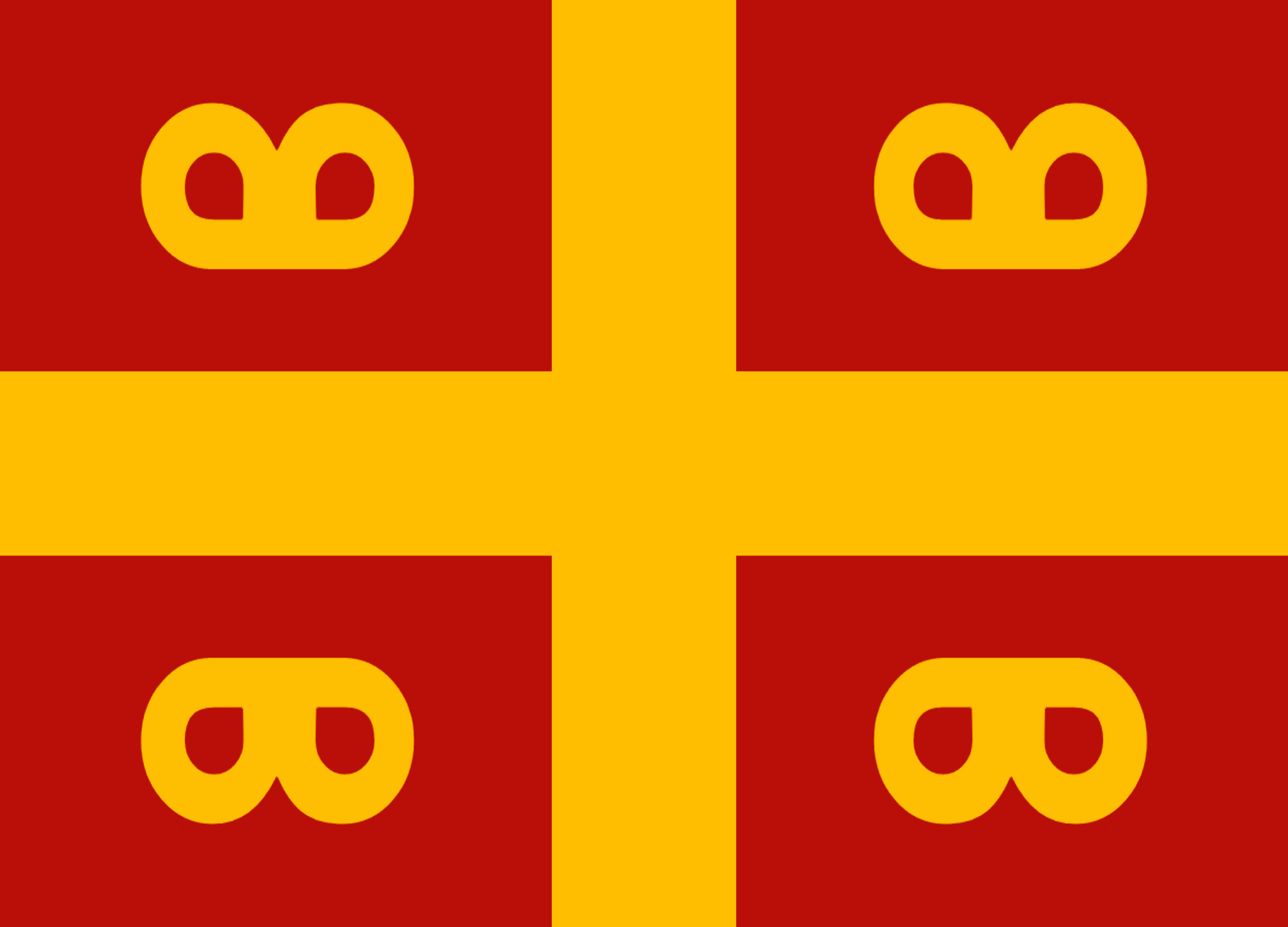
Surviving the Fall of the West
The Eastern Roman Empire survived thefall of the Western Roman Empirein 476 ADand it continued to exist for another thousand years until its fall under theOttoman Turksin1453.During its existence, the empire was the most powerful economic,culturalandmilitary forceinEurope.两个“拜占庭帝国”和“东罗马Empire” are terms created after the end of the kingdom; its citizens referred to their empire as theRoman EmpireorRomania, and themselves as “Romans”.
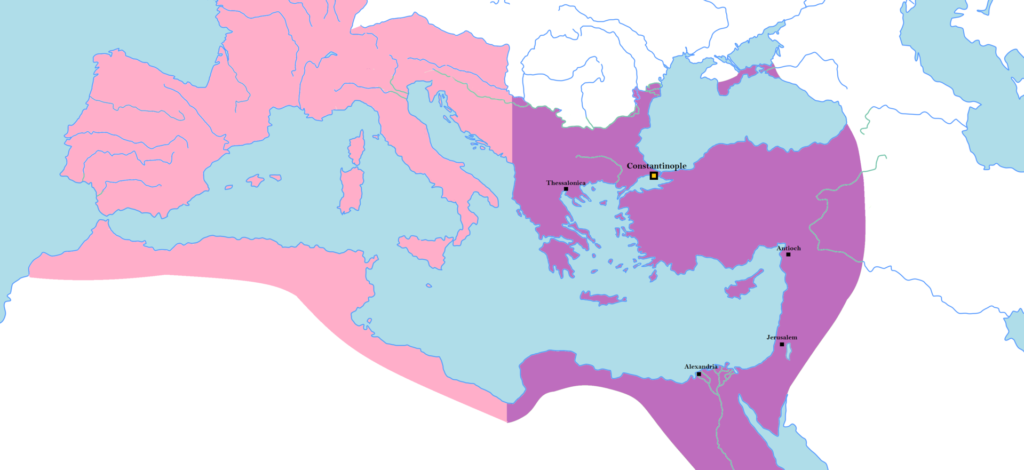
Image source:https://en.wikipedia.org/wiki/Byzantine_Empire_under_the_Constantinian_and_Valentinian_dynasties
Byzantine Architecture and its Characteristics
Byzantine architectureflourished under the rule of the Roman Emperor Justinian. It was characterized by theuse of internal mosaics, and araised dome,result of the latest engineering techniques of the 6th Century. Byzantine architecture dominated theeastern half of the Roman Empireduring the reign of Justinian the Great, spanning the centuries, from 330 until the fall of Constantinople in 1453 to today’s ecclesiastical architecture.
Byzantine architecturemixed Western and Middle Easternarchitectural detailsand ways. The builders renounced the Classical Order in favor ofcolumns with decorative tilesinspired by Middle Eastern designs. Mosaic decorations and narratives were common. For example, the mosaic image of Justinian in theBasilica of San Vitalein Ravenna, Italy, honors the Roman Christian Emperor.
The early Middle Ages was also a period ofexperimentation with construction methods and materials.The skylight windows were useful for natural light and ventilation of an otherwise dark and smoky building.

Image source:https://search.creativecommons.org/photos/7c0b5229-a50d-4b09-8eaf-1f72ed953fa6byTango7174

Image source:https://search.creativecommons.org/photos/476c84d7-6216-4a35-8cc9-c68dec76c67b
Construction and Engineering Techniques
Byzantine builders experimented withdifferent construction methods.Art historianHans Buchwaldwrites that “sophisticated methods have been developed to ensure structural solidities, such as deep foundations, wooden tie rod systems in vaults, walls and foundations, and metal chains placed horizontally within the masonry”.
Byzantine engineers used plumes to elevate domes to new heights. With this technique,a dome can rise from the top of a vertical cylinder, giving height to the dome. Like the Church ofHagia Irene,exterior of the Church of San Vitale in Ravenna, Italy is characterized by its silo-like plume construction. A good example of plumes seen from the inside is the interior of the Church ofHagia Sophiain Istanbul, one of the most famous Byzantine structures in the world.
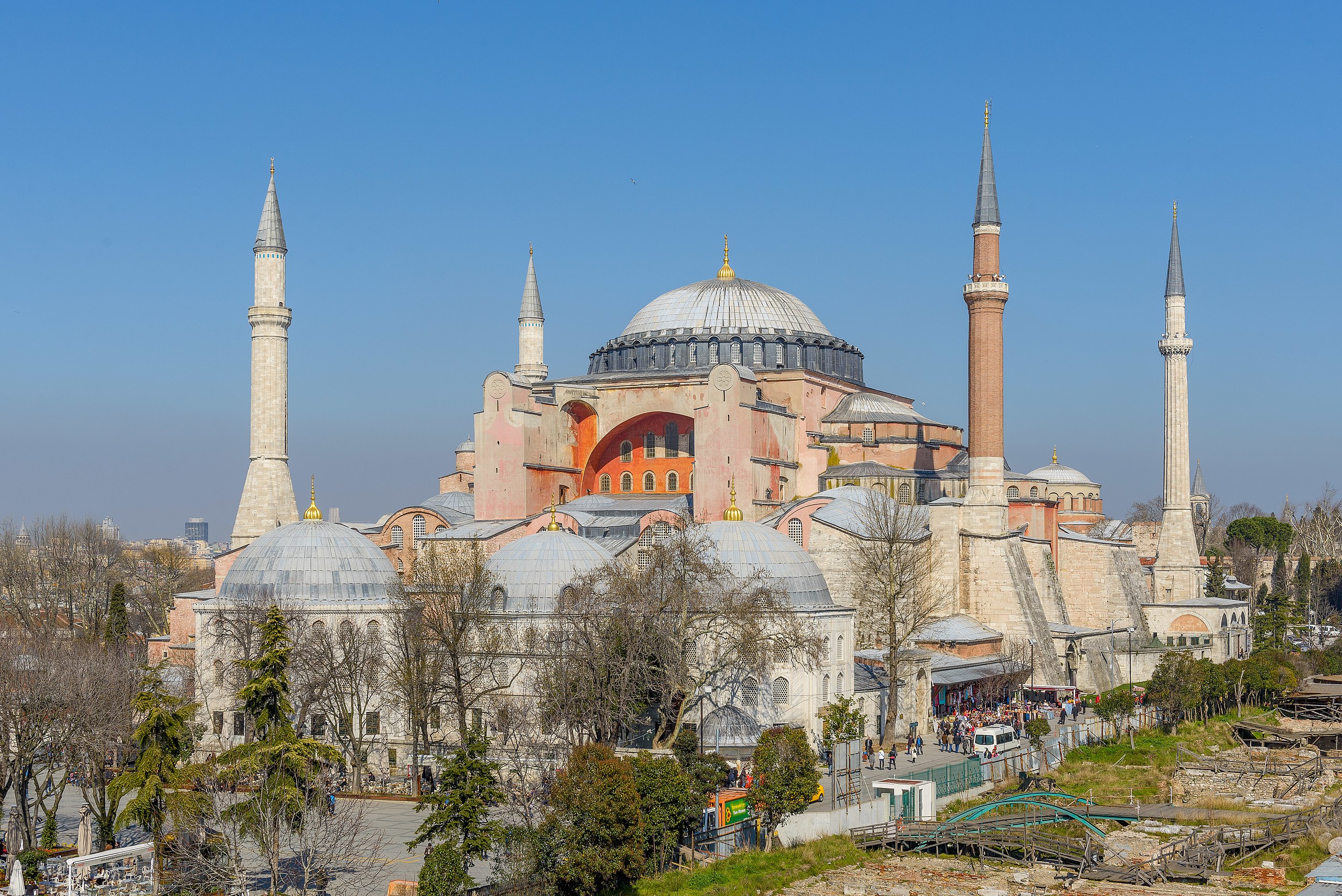
Image source:https://en.wikipedia.org/wiki/Constantinople#/media/File:Hagia_Sophia_Mars_2013.jpg
The Extent of the Empire
With its capital founded inConstantinoplebyConstantine I(r. 306-337 CE), the Empire varied in size by possessing territories located inItaly,Greece,巴尔干半岛,Levant,Asia Minor,andNorth Africa.Although influenced by the Greco-Roman cultural tradition, the Byzantines developed their political systems, religious practices, art, and architecture,distinctfrom ancient Rome. The influence of the Byzantine Empire continues today, in the religion, art, architecture, and law of many Western states, Russia, Eastern, and Central Europe.
Economic and Social Policies
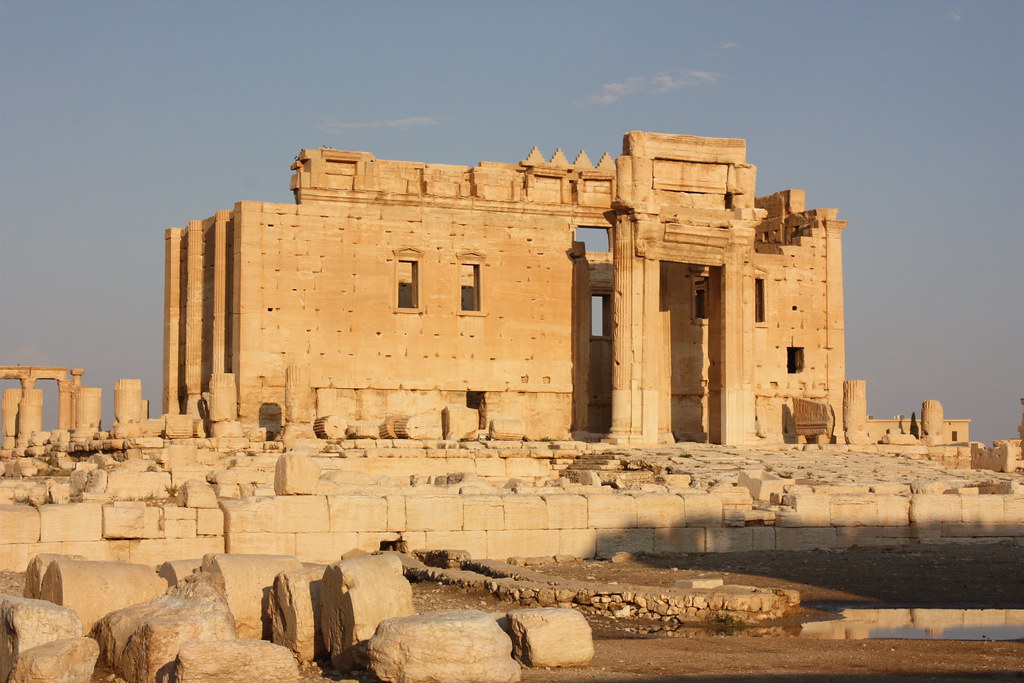
The empire’s economy had prospered intermittently. Certain provinces or parts of them商业繁荣都and agriculturally. Constantinople, in particular, influenced urban growth and theexploitation of agricultural borders.Balkan cities along the roads leading to the big city prospered, while others languished and even disappeared. For example, uncultivated land in the hilly regions of northernSyriafell under the plow to provide food for the masses of Constantinople andWest Africanterritories were ruined to provide gold to the Empire.
Image source:https://search.creativecommons.org/photos/0948f6af-1e4f-4230-86c5-96da43038694byArian Zwegers
Relations with the Barbarians
The differences between the Eastern and Western social structures, and the geographical characteristics, explain thedifferent welcome found by the Germanic invadersof the 4th and 5th centuries in the East and the West. The initial interaction between Roman and barbarians was not friendly; the Romans appeared to have exploited their unwelcome guests, and the Goths rose in anger, defeating an East Roman army atAdrianople in 378and killing the Eastern emperor in command. EmperorTheodosius I(ruled 384–395) granted the Goths the lands and granted them thelegal status of allies, who fought in the ranks of the Roman armies asautonomous unitsunder their leaders.
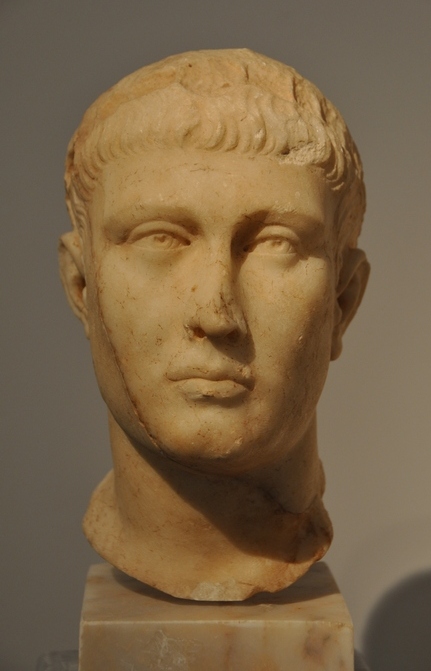
Image source:https://en.wikipedia.org/wiki/Theodosius_I#/media/File:Bust_of_Theodosius_I.jpg
Info sources:
https://www.ancient.eu/Byzantine_Empire/
https://en.wikipedia.org/wiki/Byzantine_Empire
https://www.britannica.com/place/Byzantine-Empire
https://www.thoughtco.com/what-is-byzantine-architecture-4122211

